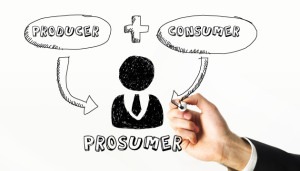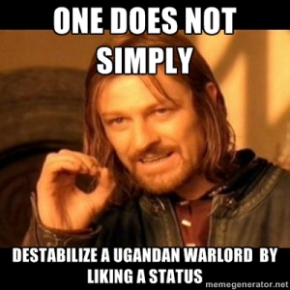My little sister looked up ‘Ferret harness’ on Gumtree. We don’t have a ferret, but seeing as I’m highly allergic to animals, of course the only thing she really wants in the world is a furry pet. Her 13-year-old logic tells her that if she bought ferret accessories, we would have no choice but to buy a ferret.
Around 5 minutes later, she was on Facebook and she noticed that all the ads on the side of her screen had changed. There was an ad for Gumtree, and a seller that sold ferrets for $500, an ad for eBay for a ferret cage, and an ad for a local pet store that sold ferrets.
The ads on the side of my Facebook are all for clothing boutiques. But before seeing my sisters Facebook, I never gave the ads a second thought – I just figured everyone else was also seeing women’s fashion.
Even though you may be looking up something on your personal computer, or watching a program on TV alone in your lounge room, people somewhere know exactly what you’re doing. But is this a problem? I personally don’t mind that an advertiser knows that I’m on the hunt for a khaki anorak jacket, because who knows, maybe their ad on the side of my screen will feature the perfect jacket from a boutique I hadn’t even heard of.
TV advertisers do it too, and they feature ads that are specifically targeted at the target market of the TV show. Information they find out through audience measurement, and with help like companies like A.C Neilson. But again, whilst watching the Bachelor I’d much rather watch ads for the new Maybelline lipstick, not the newest 4×4 turbo diesel car.
However there may be gaps in the audience measurement process at the moment, like a lacking of qualitative data, I think in the future they will have figured out how to make audience measurement even more specific. Although they may know that my household watches Home and Away every weeknight, they wouldn’t have information on which members of my house watched it. Or what about all those times you’ve just left the TV on as background noise? (Sorry mum, I know you pay our electricity bill). So the system isn’t 100% accurate at the moment. But they can still get a pretty good grasp on the ratings of a TV show, at least enough to do a comparison across other networks.
I’ve heard many people complain that there are too many reality TV shows, but reality is that’s what gets the views. I’m happy for the industry to know my TV viewing habits because it may well mean new terrible, (but great,) entertainment reality shows.
Neilson in the US proudly claim that “In addition to capturing what channels viewers are watching on each television set in the home, our meters can identify who is watching and when, including “time-shifted” viewing—the watching of recorded programming up to seven days after an original broadcast.”
Although it sounds very Big Brother, all this information they’re gathering is to provide to the marketing and advertising industry so they know exactly what/when/where to target us. But how is this a bad thing? I like hearing about new products which I could buy. And even boys like hearing about the new 4×4 turbo diesel whatever.
Am I playing right into the industry’s hands? Yeah probably.
But who cares. I like a new lipstick as much as the next girl.
Update: This ad just popped up on my Facebook, and yes I work at Bunnings.
This ‘cookie’ stuff just got way too personal.



